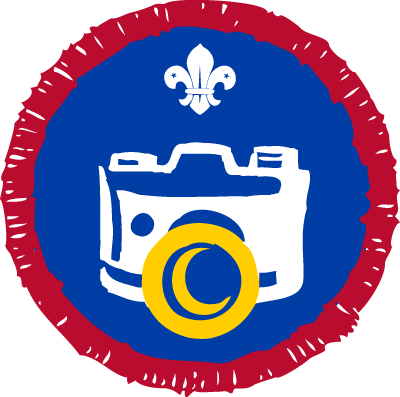
How to earn your badge
Still photography
Part 1 – When taking your pictures we don’t want you to just point and click without thinking and what you are doing – we are looking for 12 images which are technically correct (in focus, no movement blur, good range o dark and light, good range of colours) and good composition. Remember – every picture tells a thousand words, to when someone looks at your pictures they should be able to sit down and write a story about it.
“Seeing” is the key skill in photography – seeing is a conscious process of looking for or creating a composition which will work on an image.
Always be aware of backgrounds. If you have a complex background with a lot going on, it will take attention away from the subject of your image.
Think about the rule of thirds – here is the Wikipedia entry (and break it when you need to).
Parts 2 and 3 we will do by video conversation.
Part 4 – you will need to use photo editing software and send pre- and post-editing images.
If you don’t know how to get pictures from camera or phone onto computer please feel free to ask.
Parts 5 and 6 we will do by video conversation.
Choose one of these two options. Then complete all tasks for your chosen option.
Video photography
Send your storyboard and script and videos. the other parts we will do by video conversation.
Option 1: still photography
1. Choose one of these two activities:
- Produce 12 photographs, featuring at least two of these photographic techniques: portrait, still life (or similar), landscape or seascape, sport or action, or time-lapse.
- Produce six black and white photographs, based on a theme of your choice. Explain the steps you took to create them and the impact of using black and white as an alternative to colour images. You could produce high quality prints on photographic paper or present them on screen.
2. Show that you know the main settings on a digital camera or a smartphone camera. This should include focus and exposure control, and flash settings. Explain the impact of shutter speed and aperture size on the image.
3. Describe what accessories are available to use with digital cameras or smartphone cameras.
4. Edit a selection of your images, using editing software on a computer or using an app on a smartphone. This could include cropping, colour, contrast or light levels. Explain what you have changed and how it improved your image.
5. Diagnose typical faults that happen at the photographing or editing stages, such as over or under exposure and high or low contrast. Explain how to reduce camera shake and how to respond to subject movement.
6. Show that you know how to care for a digital camera or smartphone camera.
Option 2: video photography
1. Produce at least two short films from two of these categories.
- documentary
- music video
- drama
- comedy
- advertisement
- training film
Create a storyboard and script for each of these. Edit the film using editing software on a computer or a smartphone app.
2. Show that you understand:
- camera techniques such as panning, zooming, close-ups, long shots and using additional lighting.
- production techniques such as editing, how to avoid jump cuts and maintaining continuity.
3. Choose one of these two activities:
- Show that you know how to care for a video camera and accessories, such as storage media, batteries, microphones and lights.
- Discuss the differences between recording video on a video camera, digital camera and a smartphone.
